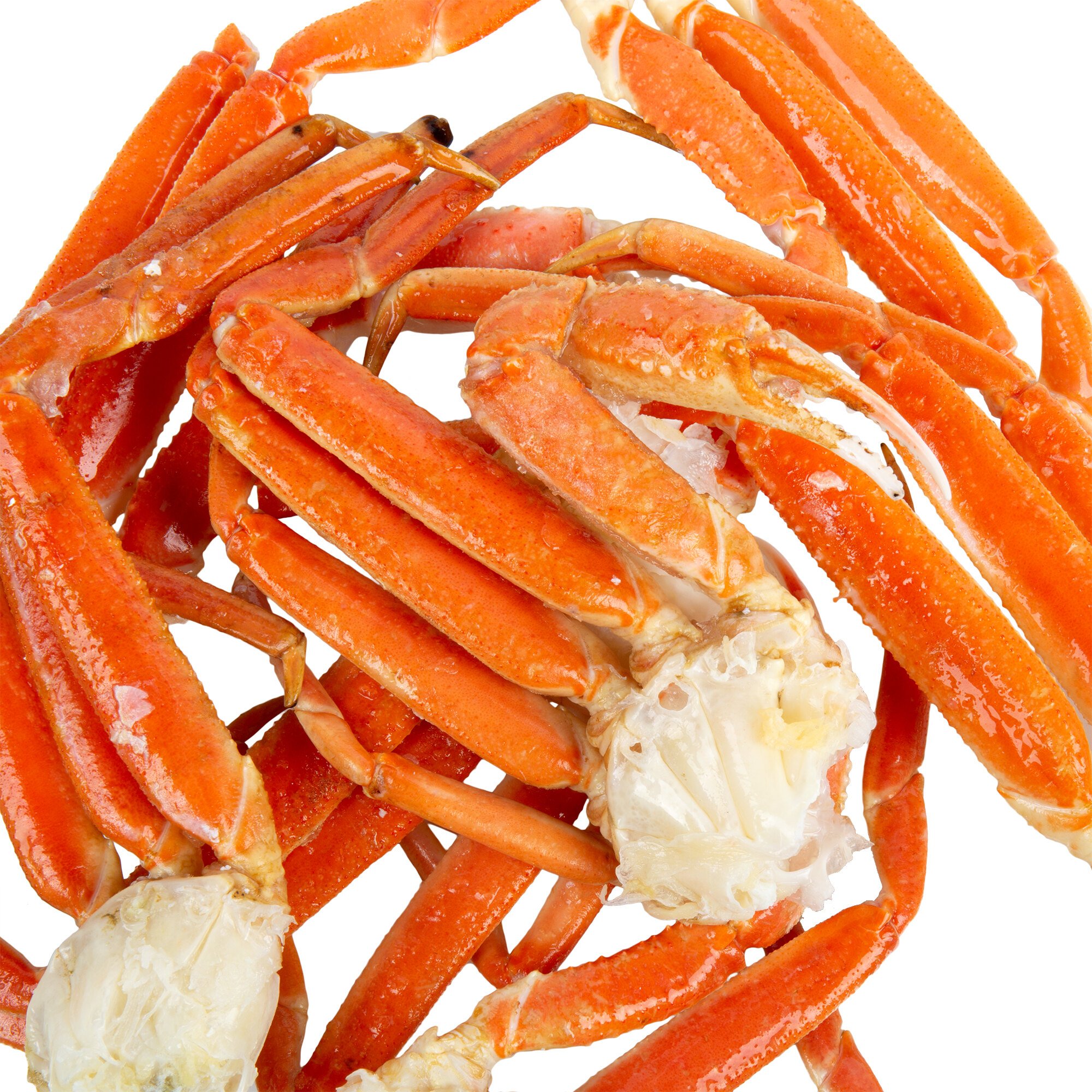Snow crab legs, a culinary delicacy prized for their succulent meat and delicate flavor, have captivated seafood enthusiasts worldwide. Dive into this comprehensive guide to explore the fascinating world of snow crab legs, from their origins and nutritional value to harvesting practices, culinary versatility, and market trends.
Whether you’re a seasoned seafood lover or a curious novice, this guide will provide you with an in-depth understanding and appreciation for this delectable crustacean.
Culinary Uses and Preparation
Snow crab legs are a delectable delicacy that offers a succulent and flavorful dining experience. Their versatility allows for a range of cooking methods, each enhancing their unique taste profile.
Cooking Methods, Snow crab legs
There are several methods to cook snow crab legs, each offering distinct advantages:
- Steaming:This gentle method preserves the delicate flavor and texture of the crab legs. Place the legs in a steamer basket over boiling water and steam for 5-7 minutes, or until cooked through.
- Boiling:Boiling is a quick and easy method that results in tender and juicy crab legs. Bring a large pot of salted water to a boil and add the crab legs. Cook for 5-7 minutes, or until the shells turn bright red.
- Grilling:Grilling imparts a smoky flavor to the crab legs. Preheat your grill to medium-high heat and grill the crab legs for 5-7 minutes per side, or until the shells are charred and the meat is cooked through.
Flavor Profiles and Pairings
Snow crab legs possess a naturally sweet and briny flavor. They pair well with a variety of sauces and seasonings, including:
- Butter:Melted butter is a classic accompaniment that enhances the natural flavor of the crab legs.
- Lemon juice:A squeeze of lemon juice adds a refreshing acidity that complements the sweetness of the crab.
- Garlic:Minced garlic adds a savory depth of flavor.
- Herbs:Fresh herbs like parsley, cilantro, or dill add a vibrant aroma and flavor.
Market Trends and Availability

Snow crab legs have gained immense popularity worldwide, leading to significant market growth. Factors such as increasing consumer demand for premium seafood, rising disposable income, and growing health consciousness have fueled the demand for snow crab legs.
The global snow crab leg market is primarily driven by North America, particularly the United States and Canada, where it is a popular delicacy. Other regions with growing demand include Europe, Asia, and South America.
Supply and Demand
The supply of snow crab legs is influenced by various factors, including fishing regulations, environmental conditions, and population dynamics. The main fishing grounds for snow crabs are located in the Bering Sea and the Gulf of St. Lawrence. Fishing quotas and seasonal restrictions are implemented to ensure sustainable harvesting practices.
Snow crab legs are a delicacy that can be enjoyed in many ways. Whether you prefer them steamed, boiled, or fried, they are sure to satisfy your seafood cravings. If you’re looking for a new way to enjoy snow crab legs, try pairing them with the Burger King New Whopper . The smoky flavor of the Whopper will complement the sweetness of the crab legs perfectly.
So next time you’re in the mood for seafood, give this delicious combination a try.
Demand for snow crab legs remains strong, driven by the increasing popularity of seafood dishes and the growing number of restaurants and foodservice establishments offering crab-based menu items.
Pricing and Availability
The pricing of snow crab legs fluctuates based on supply and demand, as well as the size and quality of the crabs. Larger, higher-quality snow crab legs typically command higher prices.
Availability of snow crab legs varies throughout the year, with peak season occurring during the winter months. During off-season, frozen or canned snow crab legs may be more readily available.
Economic and Cultural Significance
Snow crab legs hold significant economic and cultural importance globally, particularly in regions with strong seafood industries.
The snow crab leg industry generates substantial revenue through fishing, processing, and distribution. In Alaska, the largest snow crab fishery in the world, the industry supports thousands of jobs and contributes significantly to the local economy.
Cultural Significance
Snow crab legs are deeply embedded in the culinary traditions and cultural identities of many regions.
- In Japan, snow crab legs are considered a delicacy and are often served at special occasions and celebrations.
- In Alaska, snow crab legs are a staple food for many coastal communities and are often featured in traditional dishes.
- In Europe, snow crab legs are enjoyed as a luxurious seafood item and are often served in fine dining establishments.
Various festivals and events are centered around snow crab legs, showcasing their cultural significance.
- The Kodiak Crab Festivalin Alaska celebrates the local snow crab industry and features a variety of crab-themed events.
- The St. Lawrence Crab Festivalin Canada highlights the region’s snow crab fishery and offers a range of crab-inspired dishes and activities.
Closing Summary: Snow Crab Legs
In conclusion, snow crab legs are not just a culinary delight but also a symbol of sustainable seafood practices and cultural heritage. As we continue to savor the taste of these delectable crustaceans, let’s remain mindful of the importance of responsible harvesting and conservation efforts to ensure their availability for generations to come.

